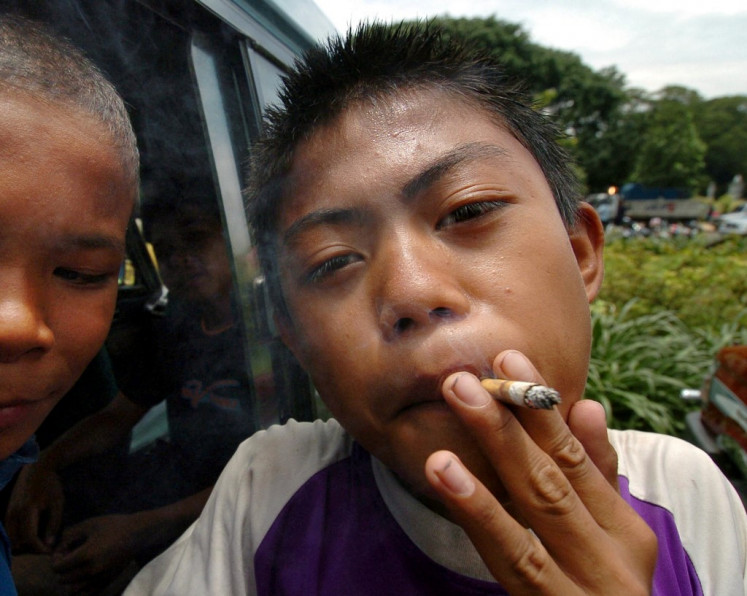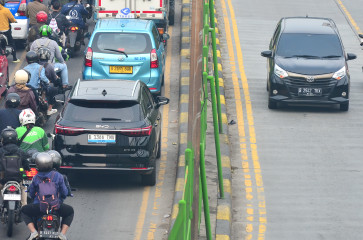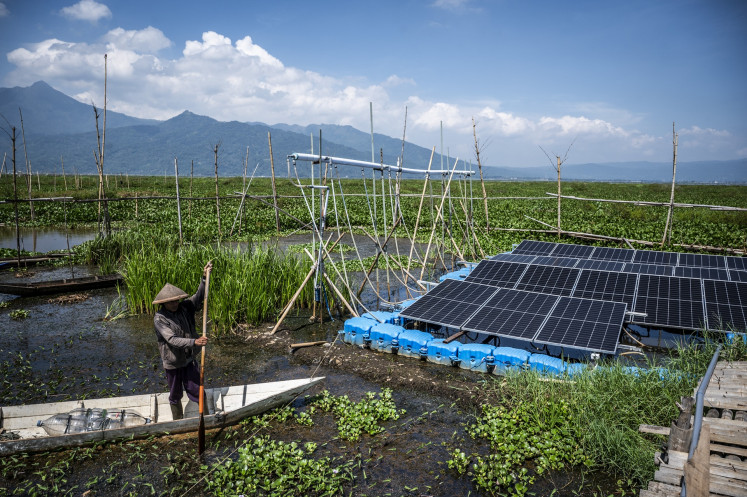Popular Reads
Top Results
Can't find what you're looking for?
View all search resultsPopular Reads
Top Results
Can't find what you're looking for?
View all search resultsSmoke and mirrors: How Big Tobacco hides cigarette ads in plain sight – pt. 2
Change text size
Gift Premium Articles
to Anyone
U
sing social media and influencers, cigarette companies have found ways to hawk their products without obvious advertising. In this second part of a two-part story, we discuss how they target Indonesia’s younger generations.
Cigarette advertisements are not the only factors that drive young people to smoke. Studies have found that familial attitudes, friends and social conditions play large roles in smoking uptake and that the widespread accessibility and affordability of cigarettes have contributed to increased smoking among Indonesian youth.
Nevertheless, cigarette ads are often the starting point for young smokers.
“Cigarette advertising mostly features the concept of masculinity, friendship and happiness. This is one of the cigarette companies’ smart tactics to present inspiring messages and values. The other important thing is that these advertisements normalize smoking, indistinctly conveying that smoking is cool, pleasurable and normal,” explained Sandi Kartasasmita during a Podcast Relatif Perspektif episode entitled “Teror Iklan Rokok di Internet” (Cigarette advertising terror on the internet) .
Sandi said cigarette advertising on the internet and other social media platforms did not explicitly ask viewers to smoke. “However, the contents of the advertising cleverly diminish any health concerns from smoking. The tactic has [...] successfully attracted young people to smoking.”
Margianta Surahman Juhanda Dinata, or Gian, said the tobacco industry launched a wide variety of campaigns, promotions and advertisements to target young people.
“The industry has been using all avenues to absorb young talent – including celebrities and social media influencers – to market their products,” said Gian, who is active in tobacco control advocacy.
“[Big tobacco] uses conventional and the most advanced promotional tools to penetrate the world of young people,” he added.
Influencers, he said, had been contributing to the normalization of smoking among young people.
“It is not so difficult to find their names through their social media accounts,” said Gian.
“They are not only paid by the cigarette companies for promotion, they are also becoming main players in, and owners of, electronic cigarettes,” he continued. “We should also focus on the tobacco industry’s soft advertising and promotion through the internet and social media platforms, including YouTube and Instagram content and TV and video streaming services.”
Along with anti-tobacco advocates from 43 youth organizations and community groups in Indonesia, Gian established the Indonesian Youth Council for Tobacco Control (IYCTC) in February 2021.
The group maps and seeks to counter the tobacco industry’s advertising strategies. Members advocate for tobacco control among students, teachers, parents and policymakers.
“Despite our continuous efforts in tobacco control advocacy, we often feel overwhelmed when exploring the industry’s activities on social media. Honestly, we do not have adequate resources to counter such a big, rich and influential tobacco industry,” Gian acknowledged.
Indonesian youth smoking statistics painted a grim picture, he said.
According to the Health Ministry’s 2018 Basic Health Survey (Riskesdas), the prevalence of smoking among children aged between 10 and 18 years old increased from 7.2 percent in 2013 to 9.1 percent in 2018, or 3.3 million children.
Young market: An Indonesian boy smokes a cigarette in a public area in Jakarta, on Feb. 28, 2005. (AFP/Bay Ismoyo) (AFP/Bay Ismoyo)Weak regulation
Indonesia is the only Southeast Asian country that has not comprehensively enforced regulations to curb cigarette advertising violations.
Putu Ayu Swandewi Astuti, a senior lecturer and researcher at Udayana University’s Faculty of Medicine, noted that parental and peer influence were significant drivers in youth smoking, in addition to the easy access to, and affordability of, cigarettes in the country.
This, she added, was compounded by the wide reach of internet cigarette advertising.
Astuti’s doctoral study was on internet cigarette advertising. She noted that the tobacco industry had been increasing its use of the medium.
“Unfortunately, it is challenging to monitor and regulate cigarette advertising, promotion and sponsorship on the internet and social media platforms. It is important to create mechanisms for regulations to catch up to the speed at which trends change on the internet,” she added.
Content posted on the internet went far beyond geographical and jurisdictional boundaries.
“This means that certain cigarette ads that are barred in Indonesia, for instance, can still be found on the internet in other countries. We need to develop a joint effort among countries to regulate this,” Astuti said.
“[A total ban on cigarette advertisement] would be almost impossible given the powerful lobby of the big tobacco industry on policymakers and related parties,” she said.
The Health Ministry attempted to redress certain loopholes in cigarette advertising laws through revisions to Government Regulation No. 109/2012. Controls on digital and outdoor advertising were one of four areas of revision proposed by the ministry.
The tobacco industry objected to the ministry’s proposal in a document dated June 16, 2021. Industry representatives wrote that the current regulation was strict enough and that they opposed the proposed limit on cigarette advertisement duration, among other revisions. They argued that shorter ads meant they had less time to make their message clear to the audience.
“Besides, there is no proof of direct correlation between young people’s exposure to cigarette ads and their decision to buy cigarettes,” the representatives wrote in one of their seven points of objection.
Another 'cool' symbol: An e-cigarette cafe employee (right) is vaping beside a customer in Jakarta, on Jan. 9, 2018. (AFP/Bay Ismoyo) (AFP/Bay Ismoyo)This debate has stalled the approval of the revisions. On Nov. 8, 2021, the State Secretary Pratikno sent a letter to the Health Ministry instructing it to review the revision proposal. The State Secretary, however, did not detail what kind of changes the ministry should make.
The state secretary told the ministry to “commence a comprehensive review of the concept of the government regulation draft with the relevant ministries and institutions, as well as invite public participation”.
The ministry’s disease control and prevention director general Maxi Rein Rondonuwu said it would not be easy to get approval for the revisions because advocates for change were up against a powerful opponent.
“Our opponents are not lightweights; they are heavyweights,” he said at a webinar in January 2022. “They are, of course, cigarette factories, the cigarette industry. Of course it’s them. They’re our mighty opponent. So I think it’s clear: If we want to say who the opponents are, I won’t be discreet, they’re most certainly the cigarette industry.”
Maxi said Indonesia was behind only India and China in terms of national child smoking rates, according to a 2015 study.
A 2019 WHO report found that cigarettes were cheaper in Indonesia than in nearly any other Asia-Pacific country.
“For the cigarette industry, Indonesia is like a Disneyland for children who are free to have fun. [The industry is] free to promote and place ads everywhere,” said Gian.
***
This article was originally published in Indonesian by Project Multatuli as part of the #TobaccoDeadlock series, which examines why the country’s tobacco control initiatives often fail. The series is supported by the Association of Indonesian Public Health Experts (IAKMI).
Translated from Indonesian by Rita Widiadana and Ronna Nirmala.
Guest Editor: Maria Hartiningsih












